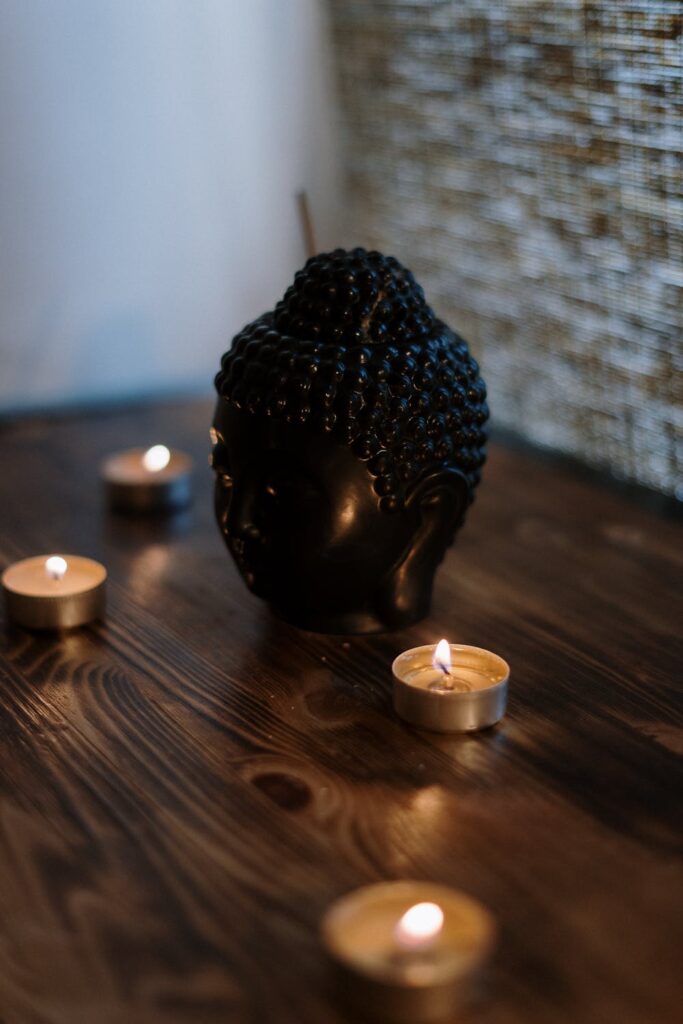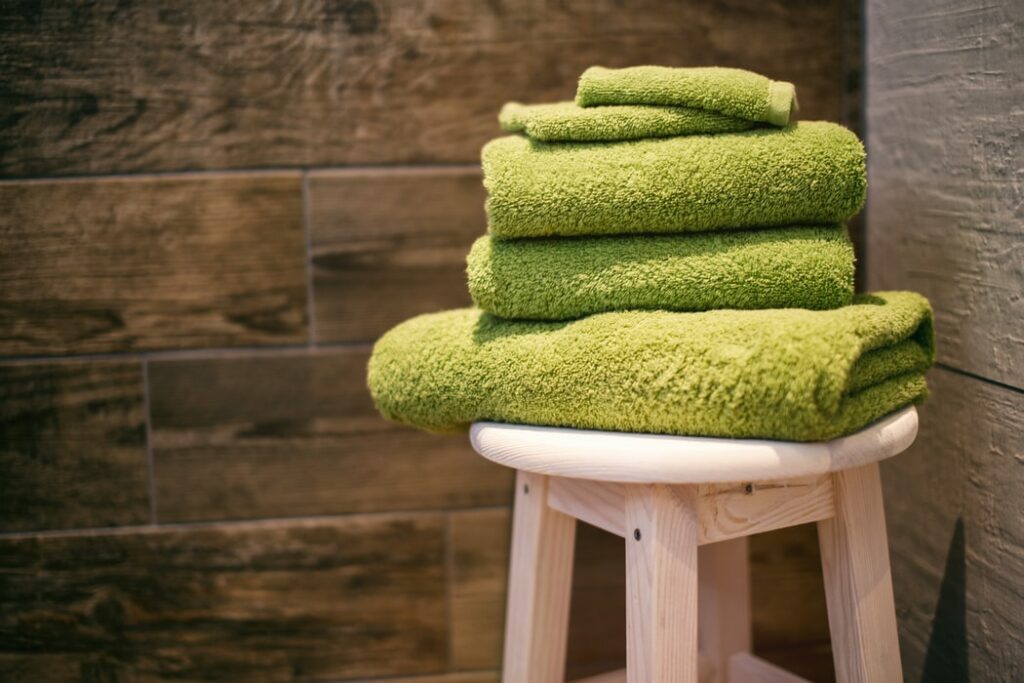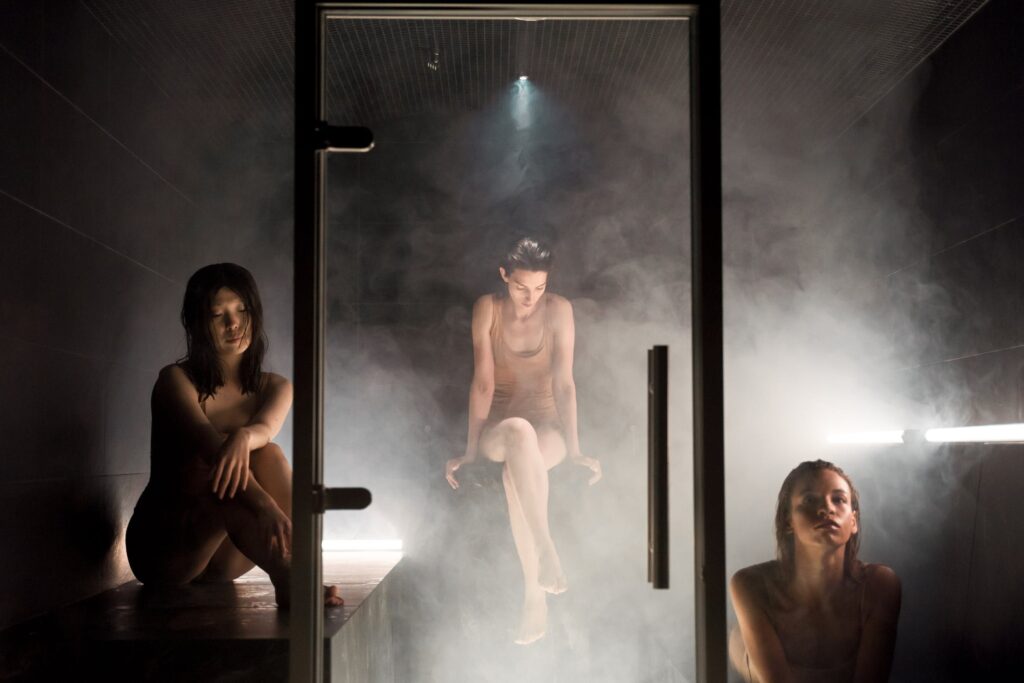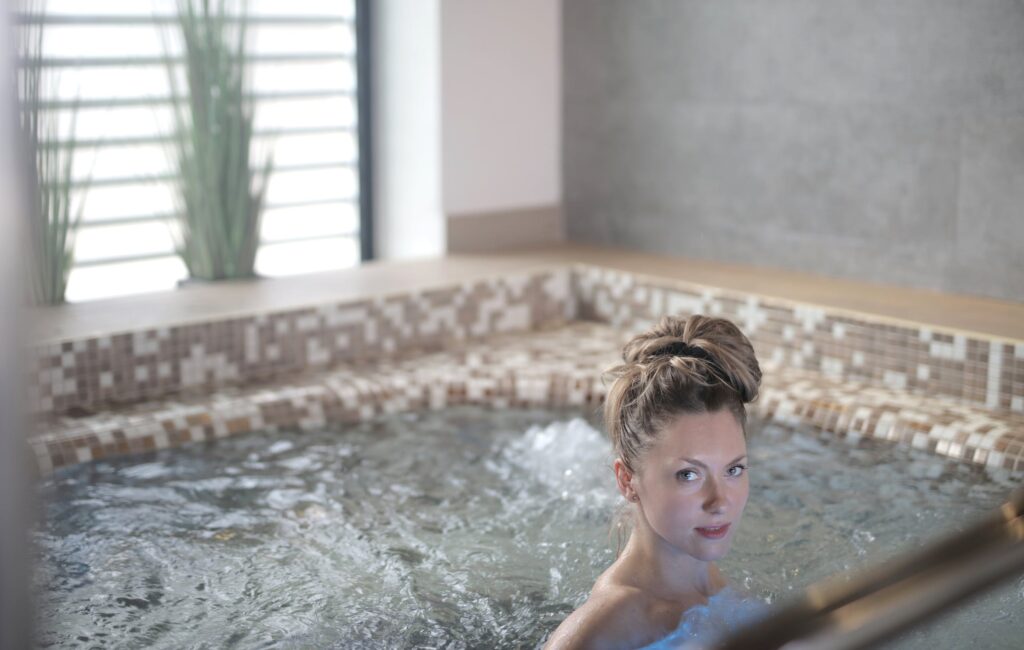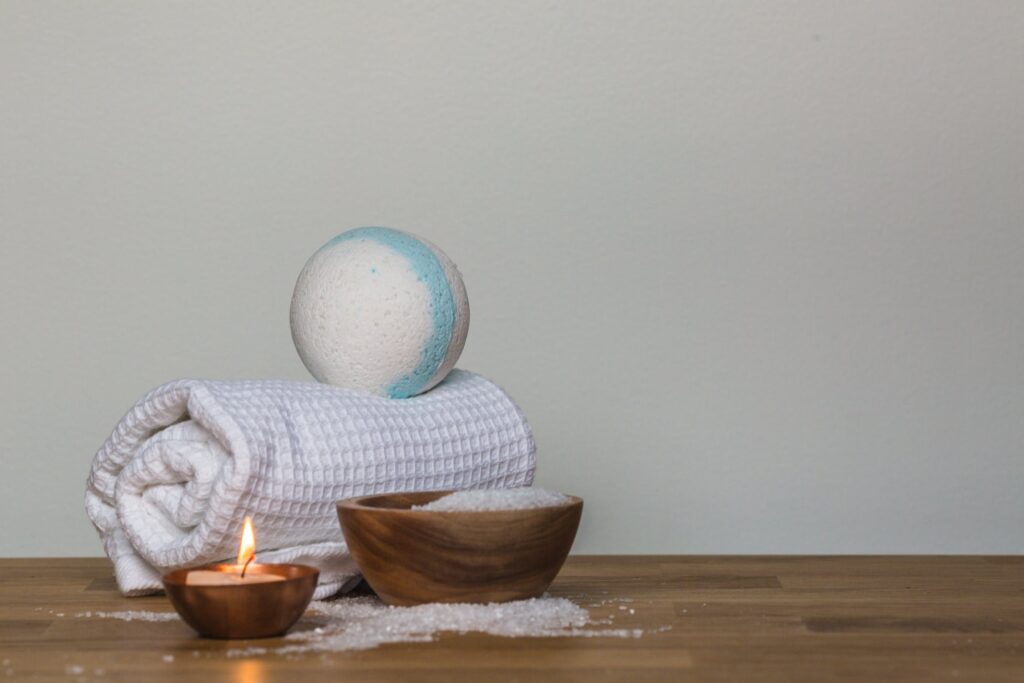A sauna is a tiny room that is heated to temps between 65 and 90 degrees Celsius (150 and 195 degrees Fahrenheit). The interiors are often made of unpainted wood and feature temperature controls. Rocks have the ability to both retain and release heat, making them a potential component of the heating element in saunas. These rocks can be used to generate steam by pouring water over them.
There are several variations of the traditional sauna. For instance, traditional Finnish saunas often employ dry heat, but traditional Turkish saunas feature more humidity.
You might find that the most enjoyable part of your gym session is unwinding in a steamy sauna that smells like wood, or that you save the most enjoyable experience for when you're on vacation. Indulging in a sauna session can offer numerous health benefits, including alleviating minor aches and pains, regardless of how frequently or infrequently one participates in the experience.
When entering a sauna, a person may have the natural assumption that their only purpose for being there is to sweat, but this is not the case. It goes without saying that you shouldn't carry a bottle of water into a sauna, or at the very least, that's one way of looking at the situation. When you start to break a sweat, you might be wondering why it's important to stay hydrated; well, here's why.
It is simple to become dehydrated when you are perspiring. Nobody intends to get to the point where they are entirely dehydrated by getting into a sauna. It's possible that doing anything like that will have a really detrimental impact on your body. Drinking water and maintaining your health should be a priority for you before, during, and after the event. Consuming water during your sauna session will not have a negative impact on your experience. Consuming water and maintaining a state of hydration can facilitate increased perspiration, which in turn will facilitate weight loss.
According to an analysis of the makeup of our bodies, our muscles are composed of 75% water, our brain is composed of 76% water, our lungs are composed of 90% water, and our bones are made up of 25% water. In addition to the other components of our health, it is essential that we always have water in our systems because it is necessary for the proper functioning of various areas of our bodies. For instance, our blood carries nutrients to various parts of our bodies, and our blood is composed of more than 82% water. Together, these two facts make up our bodies. All of this indicates that you need to keep drinking water during your time spent in the sauna. Check out Portable Sauna Melbourne specialists in providing solutions to your problem.
Female runner drinking water. Water is essential to the functioning of our bodies. Water makes up around sixty per cent of an adult human's body, and for many of the body's functions to operate effectively, water is essential. Consider all the different ways that our bodies put water to use:
- The temperature of the body Sweating helps to maintain a healthy body temperature and keeps us from overheating.
- Optimal hydration benefits both circulation and heart health because it allows the blood to carry more oxygen cells and makes it easier for the heart to pump blood across the body.
- Water assists the body in breaking down food and absorbing nutrients; water also assists the kidneys in transporting waste out of the body's cells and maintains the proper functioning of the gastrointestinal tract, all of which contribute to the removal of waste and toxins from the body.
- Water cushions and lubricates the joints, which contributes to overall joint health.
- Consuming a sufficient amount of water helps to maintain hydrated skin and hair; on the other hand, dehydration frequently results in dry skin and hair.
We cannot store water in our bodies, even though water is essential for life; as a result, we need to be vigilant about ensuring that we have a constant supply of fluids. In light of all of this, it should be no surprise that being hydrated is one of the most critical and straightforward measures you can take to preserve your health and well-being. Because of the quick loss of fluids that occurs within our bodies when exposed to high temperatures, maintaining proper hydration is of the utmost importance not only during the warm summer months but also before, during, and while using a sauna.
FAQs About Sauna
The sauna and steam room “improve circulation, lower blood pressure, reduce stress, clear congestion, promote skin health, aid in workout recovery, loosen stiff joints, burn calories, boost your immune system and remove toxins.
Improves heart function: A study has shown that regular saunas may improve heart function in people with heart failure. Another study has shown that using a sauna 4-7 times a week can significantly lower the risk of sudden cardiac death and other heart diseases.
The indulging dry sauna and steamy Turkish bath does wonders for your skin and well being; but they can merciless on your hair, leaving it dry and frizzy.
Contraindications to sauna bathing include unstable angina pectoris, recent myocardial infarction, and severe aortic stenosis. Sauna bathing is safe, however, for most people with coronary heart disease with stable angina pectoris or old myocardial infarction.
Sweating it out in a sauna can help you detox and remove a variety of toxins from your body including: Drugs and alcohol (and the toxins that illegal drugs are often cut with) Heavy metals like arsenic, lead, mercury, and cadmium which. Harmful chemicals, pesticides, mycotoxins, and BPA.
Side Effects of Dehydration
The truth is that most of us don't drink nearly enough water during the day, which causes us to remain in a state of chronic dehydration. Do you ever worry that you aren't getting enough water each day? Dry mouth, headache, constipation, dizziness, loss of energy, and lack of concentration are all symptoms of mild dehydration, in addition to thirst, of course. If you are well hydrated, you should go to the restroom once every couple of hours at the absolute least. This is one of the most accurate and straightforward methods for determining your hydration level. Have you spent the whole afternoon in one place without going somewhere else? An indication of dehydration is typically a decrease in the amount of urine that is passed.
Mild dehydration frequently goes unreported, escalating to chronic dehydration if the condition is not treated. Some persons can maintain a mild state of dehydration for days or even weeks due to poor hydration habits, particular drugs, or an illness. Chronic dehydration frequently manifests itself as feelings of exhaustion, melancholy, inability to concentrate, recurrent headaches, and an insatiable appetite. This next symptom is a very important one to keep an eye out for. Many people confuse thirst with hunger and, as a result, grab a snack rather than a glass of water when they really need to hydrate.
Common Sense Tips to Stay Hydrated
Drinking more water is the most straightforward and uncomplicated strategy to maintain a healthy level of hydration in your body. Don't just drink water when you feel like you need it is a sound piece of advice to live by. When you start to feel thirsty, it means that your body is already severely dehydrated.
It is dependent on the person how much water they need to drink to maintain a healthy level of hydration. Other factors include body weight, heat exposure, and exercise intensity. Even those who don't engage in a lot of physical activity should aim to consume between 6 and 8 glasses of water each day.
Those who engage in physical activity are encouraged by the American College of Sports Medicine (ACSM) to consume anything from 4 to 8 oz of water every 20 minutes while they are working out. In addition, the American College of Sports Medicine (ACSM) suggests consuming 16 to 20 ounces of water (two to three glasses) an hour or two before exercising, and then rehydrating with 20 to 24 ounces of water (three to four glasses) after exercising.
In addition, one must ensure that they are adequately hydrated before entering a sauna. Before using the sauna at Sunlighten, we usually drink an 8 oz glass of water, and after using the sauna, we recommend drinking 24 ounces of water to rehydrate. We also recommend consuming anything that will restore lost nutrients, such as an electrolyte drink like BioPure MicroMinerals for replenishment, as excessive perspiration causes the body to lose critical minerals.
How to use a sauna
You won't need to worry about proper conduct in the sauna if you're fortunate enough to have one installed in your home. If, on the other hand, you're going to be using the sauna in a shared space with other people (like a fitness centre), there are certain crucial dos and don'ts that you need to follow. These are the following:
- Before entering the sauna, you should first freshen yourself with a quick shower after your workout.
- Enter and leave the building fast. Saunas are designed to be airtight so that the heat may be contained within. It is important to move quickly when opening the door since it will discharge heat.
- Take note of the clothing, or lack thereof, that the people within are wearing. In certain saunas, going nudist is quite fine. In some of these places, it is best to have a towel or swimsuit with you.
- It is never acceptable to sit on the bench's surface directly, regardless of whether or not you are naked.
- Be sure to bring a towel with you to sit on, and remember to pack it up before you leave.
- If there are other people in the sauna with you, avoid stretching out.
- Before adjusting the thermostat or pouring water onto the rocks in the sauna, you should first determine whether the temperature is too high or too cold for most people in the room. It is important to remember that you may also customize the temperature to your taste by adjusting the elevation of your seat.
- Maintain a modest volume throughout your talk, and avoid engaging in any disruptive behaviour. The purpose of a sauna is to relax the body and mind.
- While you are in the sauna, you should not shave, tweeze, brush your hair, or engage in any other form of personal grooming.
- Band-aids and bobby pins are examples of items that should not be left behind as trash under any circumstances.
Sauna safety tips
Whether you use a sauna in a public or private setting, there are several essential safety precautions that you should always observe and be aware of:
- Despite the numerous health benefits they offer, saunas aren't necessarily for everyone. Before utilizing a sauna, you should discuss the possibility of doing so with your primary care physician, particularly if you suffer from uncontrolled high blood pressure, diabetes, heart failure, an irregular heart rhythm, or unstable angina. If you have any of these health conditions, you should not spend more than five minutes in the sauna at a time and ensure that you calm down gradually afterwards.
- Before utilizing a sauna, it is important to discuss your pregnancy or your plans to become pregnant with your primary care physician.
- Do not use a sauna if you are currently taking any medications that impair your body's natural capacity to regulate temperature or if you are currently taking any medications that cause you to become sleepy.
- Never use a sauna if you're unwell.
- To prevent being dehydrated when using a sauna, make sure to drink at least one full glass of water before entering the room and again after you leave.
- Do not really drink alcohol before, during, or after sauna use.
- Never use recreational drugs before, while you're in the sauna, or after you get out.
- It is not a good idea to consume a substantial meal before entering a sauna.
- According to the findings of an investigation that was presented in the American Journal of Public Health, healthy individuals should not spend more than ten to fifteen minutes at a time inside a sauna. If you have never been in a sauna before, it is important to pay attention to how your body reacts and to begin the experience cautiously (for no more than 5 to 10 mins per session). Over the course of numerous visits, you will be able to increase your tolerance for the heat.
- Never allow yourself to get sleepy when you're in a sauna.
- Leave the sauna if you begin to feel lightheaded or unwell.
- The traditional Finnish sauna experience typically concludes with a swim in some icy water. It's possible that this isn't the best option for everyone, particularly pregnant women, people with heart issues, and those with any number of other ailments. After using a sauna, it is recommended that you allow your body temperature to return to normal to prevent feeling dizzy gradually.
- The temperature of the scrotum will temporarily increase when using a sauna. This does not imply that men can use saunas as a method of birth control; therefore, please do not take this as such. Unfortunately, regular sauna use may temporarily lower your sperm count, so you should steer clear of saunas if you are trying to have a child with your spouse at the moment.
During pregnancy, the National Health Service (NHS) issues a warning that it is potentially hazardous to both the mother's health and the health of the unborn child to become overheated in a sauna. While you are pregnant, your chances of getting too hot in a sauna or steam room are likely to increase. Also, check out the Portable Sauna Melbourne page, which includes all the information regarding Portable Saunas that you could possibly require.
Hit The Sweat Shop For Hot Results
The use of saunas has become increasingly popular among people who are interested in improving their health because it speeds up biological function and leads to increased amounts of sweating.
The use of saunas, even though it is healthy, does call for the user to take some preliminary precautions to avoid the negative effects that might result from improper use or excessive use. Infrared saunas, as opposed to traditional saunas that rely on heating components, are quickly becoming the preferred option because of their increased popularity and positive health effects in both commercial and residential settings.
- To get you warmed up, infrared saunas are normally maintained at temperatures ranging from 100 to 104 degrees Fahrenheit. To help newcomers get used to the intensity of the heat, the temperature can be turned down significantly. The average temperature range for a traditional sauna is between 160 and 200 degrees Fahrenheit. Consuming a Lot of Water Is Necessary When Utilizing a Sauna.
- Before entering the sauna, make sure to hydrate yourself by drinking between 8 and 12 ounces of water. After that, remember to bring some water with you. Drinking water is almost certainly the single most important thing you can do.
- Bring the laundry and sit on a towel in the meanwhile. Your perspiration will contain poisons and heavy metals of various kinds. This is necessary to maintain proper hygiene.
- It is very recommended that one enters a sauna without any clothing on (but not at the gym or health club). Some people who use saunas make the mistake of erroneously assuming that additional clothing, such as a sweatsuit or a water suit, will assist in producing appropriate levels of perspiration. When you are covered, your perspiration cannot escape, which prevents it from evaporating and keeping you cool. This can result in overheating and limits the release of sweat, which is laden with toxic substances.
- Use It Easy and Relax: During this period, which ranges from ten to thirty minutes, you should take the opportunity to sit back, think, listen to music, or read a book. You always have the option to engage in a social activity if the circumstances call for it. Consuming a Lot of Water Is Necessary When Utilizing a Sauna.
- Keeping an Eye on the Clock: There are some knowledgeable individuals who caution against spending an excessive amount of time in the sauna. Although sessions of no more than ten minutes at a time are recommended, the recommended time limit is thirty minutes. The most accurate method for determining how much time you have left is to listen to what your body has to say. If you feel like you've had enough, then leave the room. The more frequently you go to saunas, the more accustomed your body will become to the high temperatures, and the longer you'll be able to remain inside.
- A Word About the Water: You must be careful about what you put in your body. Your best option is to drink water. Alcohol should not be consumed before, during, or after utilizing a sauna; this is a strict prohibition.
- There is a possibility that you will not begin to sweat immediately after entering the sauna. The other possibility is that you will start sweating right away. There can be some variation in sweat rates, but people who regularly use saunas have a tendency to sweat more heavily.
- How Often? You can go to the sauna daily if you are in good health. Most sauna-related health hazards are attributable to improper use of the facility. Before beginning to use the sauna, you should first discuss it with a qualified medical practitioner.
How to Intensify the Benefits of a Sauna
Sauna bathing has developed into something of a national sport in Finland, where there is roughly one sauna for every three inhabitants in the country. The tradition of using saunas as a way to relax and cleanse the body dates back thousands of years, and even now, the majority of Finns adhere to this practice every week. The Finnish Sauna Society and other devotees of the heat treatment practice offer in-depth guidance on how to make the most of your time spent in the sauna by sharing their expertise as seasoned practitioners of the art. Are you looking for the Melbourne Sauna? Stop looking; Portable Sauna has got you covered in every way.
According to the book "Sauna Therapy," written by a holistic physician named Lawrence Wilson, one should consume between eight and sixteen oz of water before entering the sauna room. According to Wilson, taking a sauna bath causes the body to produce a therapeutic sweat that helps rid the body of harmful chemicals and heavy metals. Many people who frequent saunas believe that during a session that lasts for twenty minutes, the body can shed as much as a pint's worth of water.
Raise the temperature of the sauna to somewhere in the range of 176 and 194 ℉. The Finnish Sauna Society recommends that while the sauna is heating up, you should wash your body with soap and water to remove any dirt or perfume that could be on your body.
Towels are required both to wear inside the sauna area and to sit on once inside. While you're in the sauna, make sure to keep yourself hydrated by drinking water. Get some water to pour onto the rocks in the sauna. About ten per cent of moisture might be expected to be present inside a typical dry sauna. By wetting the rocks, steam will be produced, which will momentarily elevate both the temperature and the relative humidity in the room.
After twenty minutes, you should exit the sauna. Take a shower or relax at room temperature to bring your body temperature down. Please wait at least fifteen minutes for the temperature to drop. When washing and cooling off the body, the Finnish Sauna Society recommends avoiding sudden temperature shifts as much as possible.
Proceed for a second round of the 20-minute session in the sauna. After the second round, you should take some time to relax and then another shower with soap. To become dry, you can either use a towel or sit somewhere at room temperature. According to the recommendations of the Finnish Sauna Society, you may also choose to lie down with your eyes closed, drink water to replace your fluid levels, and eat a salty snack after your sauna session. Before you get clothed, give your body adequate time to return to its normal temperature.
Tip
According to holistic physician Lawrence Wilson, who authored the book "Sauna Therapy," the best time to use a sauna is either first thing in the morning or last thing at night. Because you are likely to feel the calmest at those times, the sauna treatment will be more beneficial during those times. According to Wilson, the more one rests, the more perspiration one will produce. Additionally, Wilson recommends going to the sauna every week. According to what he recommends, you should start with no more than one session each day, and that session should not exceed thirty minutes. According to Wilson, if you are recovering from an illness, you should use the sauna once per week and then work up to using it every day.
Warning
According to the recommendations of the Finnish Sauna Society, you shouldn't consume alcoholic beverages while you're in the sauna. It is important that the sauna not be heated to a temperature that is higher than 212 degrees F. According to Wilson, you should immediately exit the sauna if you start to feel faint, if you stop sweating, or if your heart starts to race. The Finnish Sauna Society recommends that anyone who suffers from conditions such as heart illness, high blood pressure, asthma, or skin disease should keep the temperature below 194 degrees Fahrenheit and avoid sudden swings in temperature from hot to cold and vice versa. They suggest that pregnant women can safely go to the sauna under the same circumstances, but the temperature should be lowered to 158 degrees Fahrenheit. Wilson recommends that pregnant women stay away from saunas. Have a look at the Portable Sauna Melbourne options we have available to find a solution to your problem.
There are a variety of different sauna experiences available. Sessions in the sauna that are less intense and last longer definitely have their place. And most importantly, pay attention to the comments that are being made by your body.
Using a sauna can be both calming and beneficial to one's health in some ways. It is essential to use caution while using a sauna and to adhere to the established norms of behaviour.
There are a variety of diseases, including cardiovascular disease and depression, that could potentially benefit from using a sauna. However, not everyone can use them because they aren't acceptable. Before going to a sauna, it is important to get clearance from your primary care physician, particularly if you have an existing medical condition or are expecting a child.
Conclusion
Saunas offer numerous health benefits, such as alleviating minor aches and pains, but it is important to stay hydrated to prevent dehydration. Water is essential for the proper functioning of our bodies, from maintaining a healthy body temperature to assisting the body in breaking down food and absorbing nutrients. Being hydrated is essential for health and well-being, and is important not only during the warm summer months but also before, during, and while using a sauna. Common Sense Tips to Stay Hydrated include drinking more water and not just drinking water when you feel like it. The American College of Sports Medicine (ACSM) recommends consuming 4-8 oz of water per 20 minutes while working out, 16-20 ounces before exercising, and 24 ounces after exercising.
Sauna safety tips include entering and leaving quickly, checking clothing, adjusting thermostat, maintaining a modest volume, and avoiding personal grooming. Saunas are not for everyone, and it is important to discuss their health conditions with your primary care physician before using them. Drink at least one full glass of water before entering, never drink alcohol before, during, or after sauna use, and never use recreational drugs before, while, or after use.
Content Summary
- There are several variations of the traditional sauna.
- It goes without saying that you shouldn't carry a bottle of water into a sauna, or at the very least, that's one way of looking at the situation.
- It is simple to become dehydrated when you are perspiring.
- Drinking water and maintaining your health should be a priority for you before, during, and after the event.
- Consuming water during your sauna session will not have a negative impact on your experience.
- In addition to the other components of our health, it is essential that we always have water in our systems because it is necessary for the proper functioning of various areas of our bodies.
- All of this indicates that you need to keep drinking water during your time spent in the sauna.
- Check out Portable Sauna Melbourne specialists in providing solutions to your problem.
- Female runner drinking water.
- Water is essential to the functioning of our bodies.
- Water makes up around sixty per cent of an adult human's body, and for many of the body's functions to operate effectively, water is essential.
- Consider all the different ways that our bodies put water to use:The temperature of the body Sweating helps to maintain a healthy body temperature and keeps us from overheating.
- Consuming a sufficient amount of water helps to maintain hydrated skin and hair; on the other hand, dehydration frequently results in dry skin and hair.
- Do you ever worry that you aren't getting enough water each day?
- Dry mouth, headache, constipation, dizziness, loss of energy, and lack of concentration are all symptoms of mild dehydration, in addition to thirst, of course.
- If you are well hydrated, you should go to the restroom once every couple of hours at the absolute least.
- Common Sense Tips to Stay HydratedDrinking more water is the most straightforward and uncomplicated strategy to maintain a healthy level of hydration in your body.
- Don't just drink water when you feel like you need it is a sound piece of advice to live by.
- It is dependent on the person how much water they need to drink to maintain a healthy level of hydration.
- Even those who don't engage in a lot of physical activity should aim to consume between 6 and 8 glasses of water each day.
- In addition, one must ensure that they are adequately hydrated before entering a sauna.
- Before using the sauna at Sunlighten, we usually drink an 8 oz glass of water, and after using the sauna, we recommend drinking 24 ounces of water to rehydrate.
- How to use a saunaYou won't need to worry about proper conduct in the sauna if you're fortunate enough to have one installed in your home.
- If, on the other hand, you're going to be using the sauna in a shared space with other people (like a fitness centre), there are certain crucial dos and don'ts that you need to follow.
- Before entering the sauna, you should first freshen yourself with a quick shower after your workout.
- Enter and leave the building fast.
- If there are other people in the sauna with you, avoid stretching out.
- Before adjusting the thermostat or pouring water onto the rocks in the sauna, you should first determine whether the temperature is too high or too cold for most people in the room.
- While you are in the sauna, you should not shave, tweeze, brush your hair, or engage in any other form of personal grooming.
- Sauna safety tipsWhether you use a sauna in a public or private setting, there are several essential safety precautions that you should always observe and be aware of:
- Despite the numerous health benefits they offer, saunas aren't necessarily for everyone.
- Before utilizing a sauna, you should discuss the possibility of doing so with your primary care physician, particularly if you suffer from uncontrolled high blood pressure, diabetes, heart failure, an irregular heart rhythm, or unstable angina.
- If you have any of these health conditions, you should not spend more than five minutes in the sauna at a time and ensure that you calm down gradually afterwards.
- Before utilizing a sauna, it is important to discuss your pregnancy or your plans to become pregnant with your primary care physician.
- Never use a sauna if you're unwell.
- Never allow yourself to get sleepy when you're in a sauna.
- Leave the sauna if you begin to feel lightheaded or unwell.
- After using a sauna, it is recommended that you allow your body temperature to return to normal to prevent feeling dizzy gradually.

